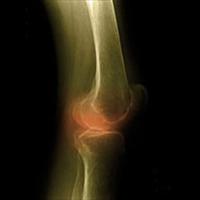Taking Care Of Your Bones And Joints

How many of us give even a second thought to the mechanisms involved every time we walk, bend, stretch or turn? Doing any kind of physical activity comes so naturally to most of us that we tend to take our musculoskeletal system completely for granted. The musculoskeletal system, which includes the joints and bones along with the surrounding soft tissues, is what keep us supple, agile and moving. The problem with taking it for granted and not giving it the care and attention it deserves is that the bones, joints and tissue degenerate slowly over time and we become aware of the deterioration only when it is much too late.
Going by current statistics, it is estimated that by 2050 almost 50% of Americans over the age of 50 are likely to suffer from problems associated with the bones and joints; unless precautionary measures are taken. In fact, musculoskeletal deterioration is the most common cause of severe physical disability and long-term pain right across the world. The global ramifications are so persistent and all-encompassing, that 2002 through to 2011 has been declared ‘the bone and joint decade’.
Contrary to popular misconception, bones are actually living, growing tissues and not just some dry, brittle material that belong to a skeleton. They require continuous care and nourishment to keep them in optimum working condition. Right through our lives, our bones undergo a constant remodeling process, in which new bone tissue replaces the old tissue that is broken down or lost. The rate at which this happens depends on your age. From birth till your twenties, the rate of new bone formation exceeds the rate of bone loss. Bones are at their largest and most dense by age 30, after which the rate of bone loss begins to slowly or rapidly exceed the rate of bone formation. When bone loss occurs too rapidly and far exceeds the rate of new bone formation and replacement, the bones become increasingly fragile and prone to breakage, leading to Osteoporosis, which is the most common of all bone diseases.
Taking good care of your bones and joints
Giving your bones and joints the nourishment they need in early days is vital for setting the stage for healthy bones and joints later on in life. Maintaining a healthy lifestyle is vital for improving your bone density and slowing down the rate of bone loss.
Maintain a healthy diet, which includes an increased take of calcium; a major component of the bone. Dairy products; green, leafy vegetables; nuts and legumes are good sources of dietary calcium. Supplement your diet with Vitamin D, magnesium, trace minerals and phosphorous; all of which are essential for complete bone nourishment.
Exercise regularly. It strengthens the muscles and improves mobility and flexibility of the joints. Weight bearing exercises, including biking, walking, weight lifting and aerobics help build muscle and strengthen the bones.
If you are overweight, take steps to lose that excess weight. When you are overweight, there is excessive pressure on your weight-bearing joints, which include the knees, hips and back.
Quit smoking completely and reduce your consumption of caffeine and alcohol. All three work to lower the levels of calcium in the body and impede bone formation.
 Back and Next - Back and Next
Back and Next - Back and Next See Also - See Also
See Also - See Also